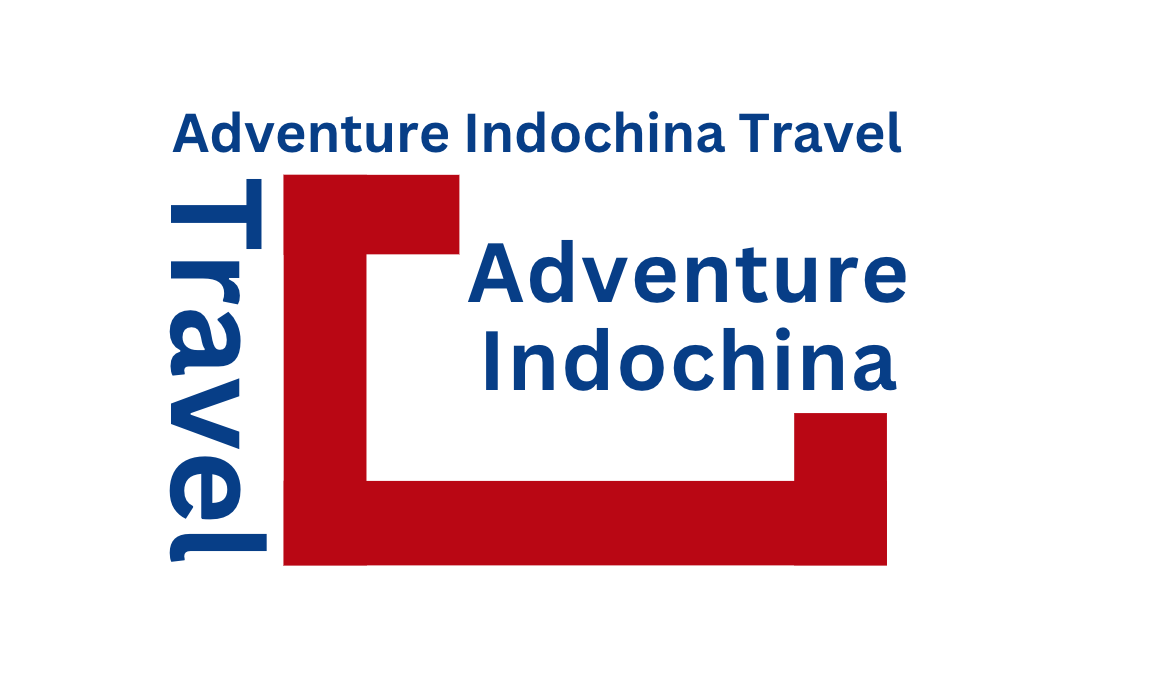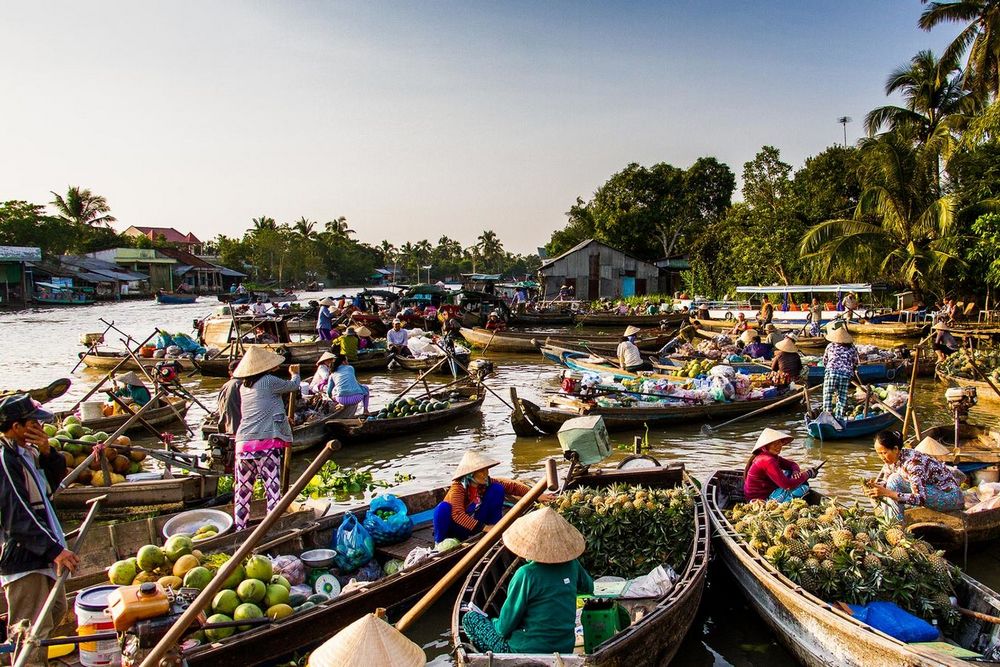
The Mekong Delta’s weather plays a crucial role in shaping travel experiences across this fascinating region of southern Vietnam. With tropical conditions year-round, travelers can expect warm temperatures and varying rainfall depending on the season. This guide offers an overview of seasonal weather patterns, the best times to visit, and how climate influences daily life and tourism. Knowing what to expect will help you plan the perfect Mekong Delta adventure.
What is the Weather Like in the Mekong Delta?
The Mekong Delta enjoys a tropical monsoon climate, with warm temperatures throughout the year and high humidity. Average daytime temperatures range from 23°C to 34°C, with minimal variation between day and night. Humidity often reaches 80–90%, intensifying the feeling of heat for those unfamiliar with tropical conditions.
Rainfall follows a predictable pattern, with a wet season from May to November and a dry season from November to April.
- Dry Season: Clear skies, low rainfall, and ideal conditions for boat trips, cycling, and exploring floating markets.
- Wet Season: Afternoon downpours and occasional storms. Though rain can disrupt plans, showers often last just 30–60 minutes and bring vibrant greenery and replenished waterways, perfect for river cruising.
Understanding the Mekong Delta’s Seasons
Here’s what to know about the two primary seasons:
Dry Season (November to April)
- Rainfall: Only 5–10% of annual totals, resulting in dry, sunny conditions.
- Temperatures: Daytime highs around 30–33°C, cooling to 21–24°C at night, especially in December and January.
- Sunshine: 6–8 hours daily, particularly from February to April.
The dry season is perfect for outdoor activities—river cruises, cycling, and village visits. December to February also features festivals and blooming flowers, adding cultural depth to your visit.
Wet Season (May to November)
- Begins with the southwest monsoon in May and peaks with heavy rain in August and September.
- Temperatures remain warm (31–34°C), with humidity exceeding 80–85%.
- Rain often falls in short but intense afternoon showers lasting 5–30 minutes, although occasional full-day storms do occur.
Despite challenges, the wet season brings the delta to life: lush rice paddies, high water levels for deeper canal exploration, and vibrant floating markets. Mornings are typically dry, allowing early excursions before rain hits later in the day.
Best Time to Visit the Mekong Delta
Your ideal time to visit depends on travel style and interests:
Dry Season (November to April)
- Most popular for tourism.
- Temperatures range from 23–32°C with plenty of sun.
- Cooler months (December–January) are particularly pleasant for exploring outdoors.
- Ideal for river cruises, floating markets, and sightseeing—but also the peak tourist season with higher prices and more crowds.
Shoulder Seasons & Special Periods
- January–March: Pleasant weather plus cultural festivals like Tet and Ba Chua Xu.
- June–August: Peak fruit season—perfect for sampling fresh durian, mango, and other tropical treats.
- September–November: “Floating season” with swollen waterways, offering unique boat travel experiences and fewer tourists.
Wet Season (May to October)
- Landscapes are lush and vibrant, with fewer tourists and lower costs.
- Afternoon rain showers are common but usually short, allowing flexibility for most activities.
- Some remote activities might be affected by flooding or travel delays.
Quick Summary Table
| Season | Advantages | Considerations |
|---|---|---|
| Dry (Nov–Apr) | Comfortable weather, sunshine, full tourism services | Crowds, higher prices |
| Harvest (Jun–Aug) | Abundant fresh fruit, quieter villages | Hotter, more humid |
| Floating (Sep–Nov) | High water levels, cultural authenticity, lower cost | Rainy afternoons, flooding |
| Wet (May–Oct) | Lush landscapes, immersive nature, fewer tourists | Frequent rain, flexible plans needed |
How Weather Affects Travel and Activities
Here’s how seasonal weather impacts key activities in the Mekong Delta:
River Cruises and Floating Markets
- Dry Season: Calm waters, clear skies, and ideal conditions for exploring floating markets like Cai Rang and Phong Dien. Cruises can easily navigate narrow canals without weather disruptions.
- Wet Season: Higher water levels allow access to more remote waterways. Rain showers are brief, and most tour operators adjust with covered boats and flexible schedules. The scenery is lush and photogenic, but occasional delays can happen.
Cycling and Exploring Villages
- Dry Season: Best time for cycling—dry roads, clear skies, and manageable heat. Perfect for biking through rice fields, small towns, and canals.
- Wet Season: Roads can become muddy or flooded. Morning rides are safest, while afternoons may be disrupted by rain. Bring lightweight rain gear and waterproof bags.
Nature and Wildlife Watching
- Wet Season: Rain floods wetland areas, creating ideal habitats for birds and aquatic life. Birdwatchers flock to reserves like Tram Chim and Tra Su Forest to see rare species.
- Dry Season: Easier access to reserves, clearer skies, and better light for photography. Wildlife gathers near water sources, making sightings predictable.
Local Culture and Festivals
- Dry Season: Major festivals like Tet (Vietnamese Lunar New Year) and Ba Chua Xu Festival occur during dry months, offering vibrant cultural experiences with minimal weather disruption.
- Wet Season: Festivals like Ok Om Bok (October–November) celebrate Khmer culture, with boat races and lantern festivals. Rain can add a mystical atmosphere but may complicate logistics.
Travel Logistics and Accessibility
- Dry Season: Roads are clear, ferries run reliably, and travel is straightforward.
- Wet Season: Potential for flooded roads, delayed boat trips, and shifting plans. Book with reputable tour operators who understand local weather patterns for the smoothest experience.
Health and Comfort
- High humidity can be tiring—hydrate often, wear breathable clothing, and use sunscreen.
- Mosquito activity spikes in the wet season. Bring insect repellent and consider wearing long sleeves in the evenings.
- Dry season is easier on travelers unaccustomed to tropical climates, but sun protection and hydration remain essential.
What to Pack for the Mekong Delta
Packing smart helps ensure comfort and readiness for the region’s tropical climate. Here’s a practical checklist:
Clothing Essentials
- Light, breathable fabrics like cotton or linen.
- Quick-drying activewear, especially useful during rainy months.
- A light jacket or shawl for cooler mornings or evenings—and for modesty at temples.
- Modest clothing that covers shoulders and knees for religious sites.
- Slip-on shoes for easy temple visits.
Rain Protection
- A compact rain jacket or poncho for sudden showers (especially May–October).
- A small umbrella, useful for both rain and sun.
- Waterproof backpack cover or dry bag to protect valuables and electronics.
Footwear
- Comfortable walking shoes or sneakers with good grip.
- Rubber-soled sandals or water-friendly footwear for boat trips or wet areas.
- Flip-flops or slip-on sandals for relaxation and easy temple access.
Sun and Insect Protection
- Wide-brimmed hat or cap.
- UV-protective sunglasses.
- High-SPF sunscreen.
- Insect repellent, especially important during wet season.
- Long-sleeved tops for added protection.
Accessories & Gear
- Daypack with rain cover.
- Reusable water bottle.
- Dry bag or waterproof pouch for valuables.
- Compact toiletries kit including hand sanitizer, tissues, and personal items.
Health & Miscellaneous
- Basic first-aid kit with pain relievers, motion-sickness pills, antihistamines, and bandages.
- Quick snacks for long tours or river cruises.
- Sufficient local currency in small denominations for remote areas.



